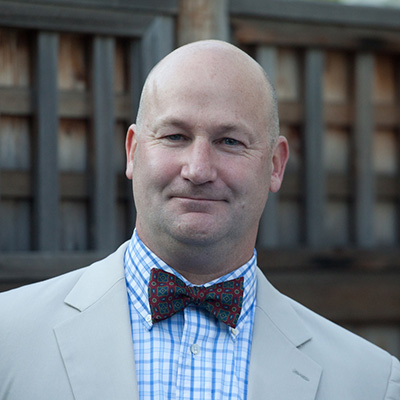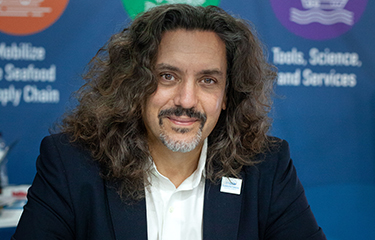The seafood sector has seen an explosion of innovation development over the last 20 years to address some of the industry’s biggest environmental and labor challenges. Certification, fishery improvement projects, benchmarking, audits and assessments, ratings, supply chain and traceability tools, and pre-competitive collaborations are all innovations developed to help seafood become more sustainable and more competitive in global protein markets.
Although the sector and its partners have worked to develop innovation, the seafood industry has not seen widespread adoption of those innovations across seafood supply chains. While this is a problem for the seafood industry – leaving it exposed to supply chain and reputational risk – it is not a problem unique to the industry.
“The Chasm” is widely accepted innovation adoption theory developed by Geoffrey Moore to help business understand the market dynamics around product category innovation adoption (as opposed to product innovation). As explained in “Seafood2030’s The Chasm: Understanding Innovation Adoption and Diffusion, Crossing the Chasm makes the case for a distinct difference between the adoption drivers for the early part of the marketplace, the innovators and early adopters, and the adoption drivers for the rest of the marketplace. Innovators and early adopters tend to adopt innovation that fits with their vision for their company and the future. The rest of the marketplace tends to be more pragmatic or they adopt only when necessary – when their business mission critical business strategy is broken.
The Sustainable Fisheries Partnership’s supplier roundtables are one of the leading efforts in seafood focused on “Crossing the Chasm” and engaging the broader industry. The SFP roundtable model aligns with innovation adoption theory like The Chasm by recognizing and addressing the different motivations and needs of the majority of seafood companies trying to incorporate more sustainable practices into their business.
In a four-part series, Seafood2030 and SeafoodSource interviewed key players in SFP’s supplier roundtables to learn more about how they are pushing for wider adoption of sustainable practices in the global seafood industry. Part four features Jim Cannon, SFP’s CEO and founder.
Part one of the "Crossing the Chasm" series featured Sarah Hussey, the fisheries manager for Sea Farms Ltd. and the chair of Sustainable Fisheries Partnership's global squid roundtable. Part two featured Santiago Alvarez, the CEO of Miami, Florida, U.S.A. based seafood supplier Alfa Gamma Group and the chair of SFP's global mahi supply chain roundtable. Part three featured Jean-Louis Meuric, the former CEO of Davigel and current board chair of the Sustainable Fisheries Partnership.
SeafoodSource: Why did you develop the supply chain roundtable model? What was missing in sustainability that you were addressing?
Cannon: SFP created supply chain roundtables as a way to align and mobilize seafood industry leaders to ensure that FIPs are advancing improved fishery policy and management. The supply chain roundtables provide a forum for C-suite and sustainability leaders in companies in the middle of the supply chain to organize and maximize their policy impact.
Stakeholders are much more powerful advocates than NGOs or project teams. And, unlike large retailers where seafood is a small fraction of their business, supply chain companies are highly motivated to support sustainable seafood, since it’s what their entire business relies on.
From our experience, we find that fishery improvement projects that cover a lot of a fishery and have broad supply chain support are better at engaging government and achieving policy change than FIPs set up by individual suppliers or smaller groups of fishers. In particular, FIPs led by local CEOs, owners, and association directors are more effective in persuading policymakers to act.
But as the number of FIPs grew, it became more difficult for these leaders to participate, especially at companies working in fisheries around the world. The supply chain roundtables provide the ability to scale-up limited efforts with enhanced industry cooperation for global reach and policy impact.
SeafoodSource: How do supply chain roundtables work from a company point of view and what drives companies to improve in this model?
Cannon: Participating in supply chain roundtables enables companies to meet the expectations of their customers, the end-buyers of seafood. These big buyers have sustainability conditions for what they are going to sell. Many leading retailers and restaurants evaluate suppliers on their role in improving fisheries, in addition to asking if the product is certified or in a FIP. And all of these factor into sourcing decisions.
So, to stay in business, supply chain companies must adhere to these sustainability requirements and present themselves as responsible suppliers. The benefits of collaboration are the results of better-managed fisheries: a broader, deeper, and more-diverse range of responsibly produced seafood that companies can offer to buyers. In turn, this helps with financing, assured supply, and costs and sales. The more active the roundtable, the greater the collaborative benefits.
SeafoodSource: What are the strengths and limitations of the FIP and roundtable model?
Cannon: Roundtables and FIPs can play a big part in addressing social issues, but they cannot do it alone. SFP is focused on two core social issues: First, how fishers and seafood workers are treated, and second, how small-scale fishers and local communities can protect their access rights and work with government to manage their fisheries.
To improve labor and social conditions for workers in a country, supply chain roundtables and FIPs should support the work of specialist local NGOs and civil society organizations that engage workers and help them through state and non-state remediation channels. These groups have more expertise, credibility, and influence than individual efforts alone.
In artisanal and small-scale fisheries, SFP is helping bring fishers together at the national level to secure critical needs like the legal right to fish, formally protected access rights, and the ability to “co-manage” fisheries with government. We believe that these issues are best addressed through broad engagement with governments on a country-by-country basis. Supply chain roundtables can have an important role in supporting and advancing these objectives.
SeafoodSource: With the 2017 launch of Target 75, you decided to track the collective impact of your work across species and sectors rather than looking at specific project or program metrics. Why was that important to SFP?
Cannon: We wanted to establish a global vision to promote greater alignment and shared goals in the sustainable seafood movement. Target 75 seeks to ensure that the world’s major seafood sectors are sustainable or making regular, verifiable improvements. Target 75 began as an SFP-led initiative, but has become a framework that guides dialogues, policies, commitments, and progress throughout the sustainable seafood movement.
Target 75 also continues to evolve to address growing sustainability objectives. At first, we focused on greatly expanding the number of large-scale collaborative industry-led FIPs, because we knew these attributes were critical to improving fisheries. Now, there is a greater emphasis on the quality of FIPs, in addition to quantity, with a focus on ensuring that they address key challenges such as illegal, unregulated and unreported (IUU) fishing; effective co-management in small-scale fisheries; and reducing bycatch of ocean wildlife.
Photo courtesy of Sustainable Fisheries Partnership







